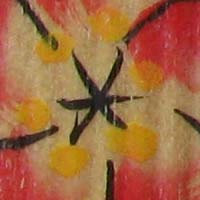Canon PowerShot SX110 IS Review
Review Date: October 6th 2008
Author: Gavin Stoker
Leave a comment about this Review
|
Image Quality
All of the sample images in this Review were taken using the 9 megapixel Superfine JPEG mode, which gives an average image size of around 3-5Mb.
Out in late summer sunlight the SX110 IS presents some pretty strong evidence of pixel fringing, which is disappointing, plus, again under the same conditions, with evaluative metering selected blown highlights are a regularity if the camera is left to its fully auto, point and shoot devices. Whereas most rivals willfully underexpose in such circumstances, the SX110 is wont to go the other way, so it's lucky that activation of and access to the exposure compensation slider is only ever a fingertip way. Canon's default colour settings have been edging toward a more neutral palette of late, so I actually found switching to the vivid setting on occasion provided a punchier more three dimensional result that was closer to my own eyes. Though images at higher ISOs appear sharper than those delivered by the SX100, that also means noise is more visible too, creeping in from ISO 400 and more immediately visible at ISO 800 and ISO 1600 in particular. Though noise is indeed visible, it isn't of ruinous proportions. The ISO 3200 setting accessible via the scene modes simply serves to cut down on visible noise by eradicating finer detail, so stick to ISO 1600 if pushed. Across a variety of shooting scenarios and conditions however, when it comes to the SX110's image quality, sharpness impresses, particularly at wide angle and mostly at maximum telephoto. With the 'IS' mode set to continuous for a large part of the test period, blurred images were more usually than not absent – even when shooting handheld under tungsten light.
Noise
There are 7 ISO settings available on the Canon Powershot SX110 IS which you can select at any time if the camera is in the normal shooting mode. Noise is visible from ISO 400 and upwards, with the ISO 1600 option returning results that look like they were shot through a trickle of sand rather than an all-out storm, which means they're not the worst we've seen by far and still usable. Here are some 100% crops which show the noise levels for each ISO setting:
ISO 80 (100% Crop) |
ISO 100 (100% Crop) |
 |
 |
ISO 200 (100% Crop) |
ISO 400 (100% Crop) |
 |
 |
ISO 800 (100% Crop) |
ISO 1600 (100% Crop) |
 |
 |
ISO 3200 (100% Crop) |
|
 |
|
Sharpening
Here are two 100% Crops which have been Saved as Web - Quality 50 in Photoshop. The right-hand image has had some sharpening applied in Photoshop. The out-of-the camera images are just a little soft at the default sharpening setting. You can change the in-camera sharpening level if you don't like the default look.
Original
(100% Crop) |
Sharpened (100% Crop) |
 |
 |
 |
 |
Chromatic Aberrations
The Canon Powershot SX110 IS did suffer from chromatic aberrations during the review. On close inspection there are lines of purple and cyan fringing visible between areas of high contrast and highlights are blown, as shown in the examples below.
Example
1 (100% Crop) |
Example
2 (100% Crop) |
 |
 |
Macro
The Canon Powershot SX110 IS offers a Macro setting that allows you to focus on a subject that is just 1cm away from the camera when the lens is set to wide-angle. The first image shows how close you can get to the subject (in this case a compact flash card). The second image is a 100% crop.
Macro Shot |
Macro Shot (100% Crop) |
 |
 |
Flash
The flash settings on the Canon Powershot SX110 IS are Auto, On, Auto Red-eye Reduction, Slow Synchro and Off. These shots of a white coloured wall were taken at a distance of 1.5m.
Flash Off - Wide Angle (36mm) |
Auto Flash - Wide Angle (36mm) |
 |
 |
Flash Off - Telephoto (360mm) |
Auto Flash - Telephoto (360mm) |
 |
 |
And here are some shots of yours truly. As you can see, neither the Flash On setting or the Red-Eye Reduction option caused any amount of red-eye.
Flash On |
Flash On (100% Crop) |
 |
 |
Flash - Red-Eye Reduction |
Flash - Red-Eye Reduction (100% Crop) |
 |
 |
Night Shot
The Canon Powershot SX110 IS's maximum shutter speed is 15 seconds, which is great news if you're seriously interested in night photography. The shot below was taken using a shutter speed of 1 second, aperture of f/2.8 at ISO 200. I've included a 100% crop of the image to show what the quality is like.
Night Shot |
Night Shot (100% Crop) |
 |
 |
|
![]() PhotographyBLOG
is a member of the DIWA
organisation. Our test results for the Canon PowerShot SX110 IS have
been submitted to DIWA
for comparison with test results for different samples of
the same camera model supplied by other DIWA
member sites.
PhotographyBLOG
is a member of the DIWA
organisation. Our test results for the Canon PowerShot SX110 IS have
been submitted to DIWA
for comparison with test results for different samples of
the same camera model supplied by other DIWA
member sites.
